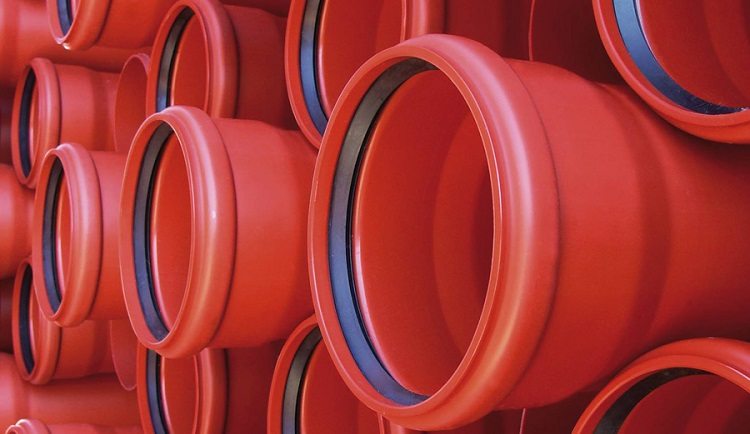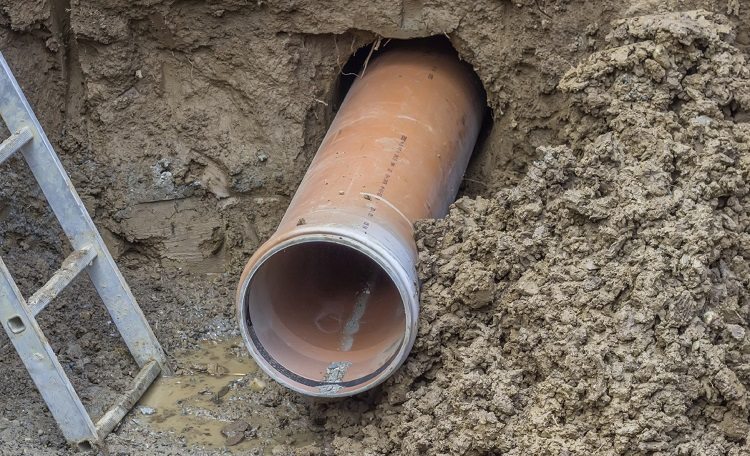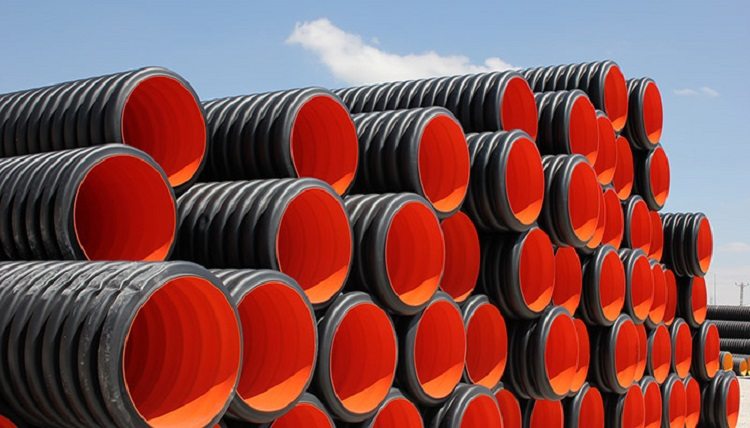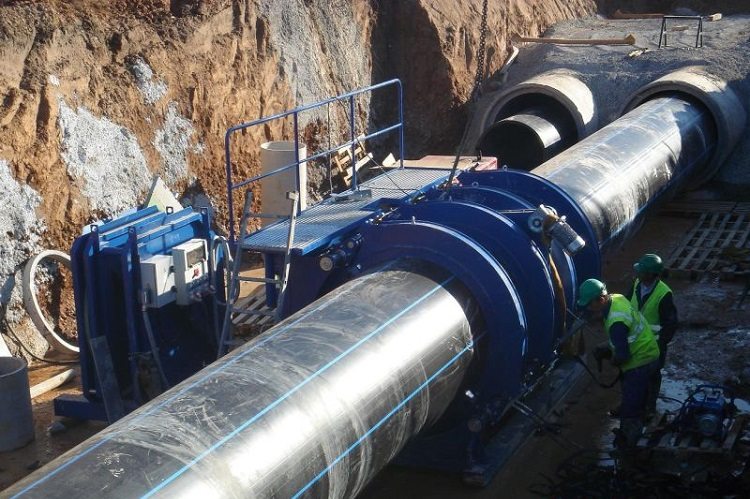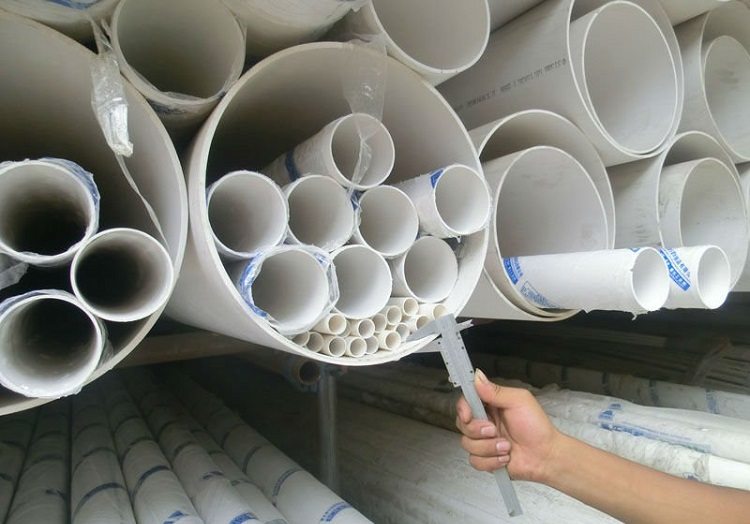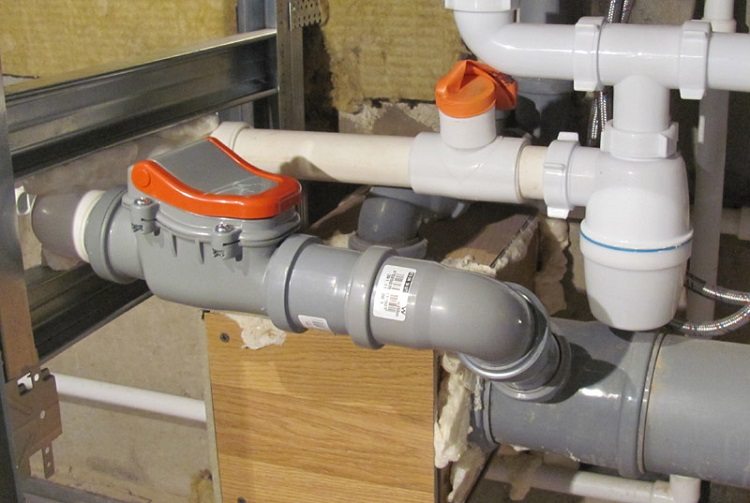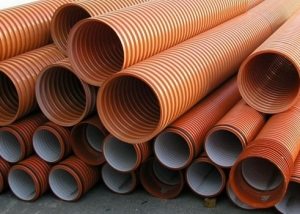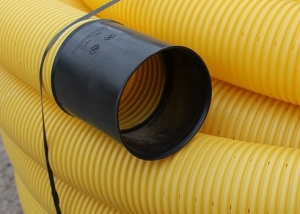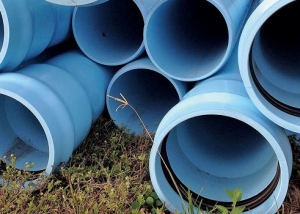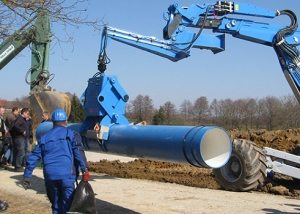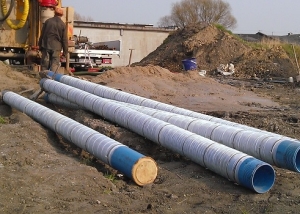More recently, it was easy to choose pipes for sewage. Their range was limited to steel and cast iron products. But technology is constantly evolving. Therefore, today on the market, depending on the material of manufacture, other types of sewer pipes have appeared - polypropylene, polyethylene, polyvinyl chloride and so on. Of course, without specialized knowledge, it is very difficult to make a choice.
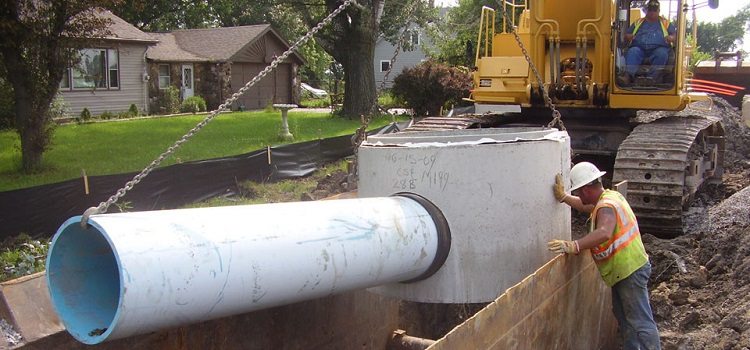
For the installation of sewer systems today, a variety of types of pipes are used, including polymer
Content
Pipes for sewage in a private house and the requirements for them
Having made the decision to install the drainage system in a country cottage or in the country, it must be borne in mind that all its elements must have high throughput, as well as be characterized:
- resistance to low temperatures (this applies to outdoor sewage pipes);
- long term of operation;
- smooth inner surface;
- high mechanical and chemical wear resistance (in this case, we are talking about the surface not only of sewer pipes for external sewage, but also for internal);
- increased strength.
All modern sewer systems are divided according to their location and destination. In internal networks, sewage is collected, which is then transported through external sewer pipes to external networks. The final point of delivery of human waste products are cleaning complexes. They are available in any locality. In these facilities, wastewater is treated to the required characteristics, after which they are sent to discharge points.
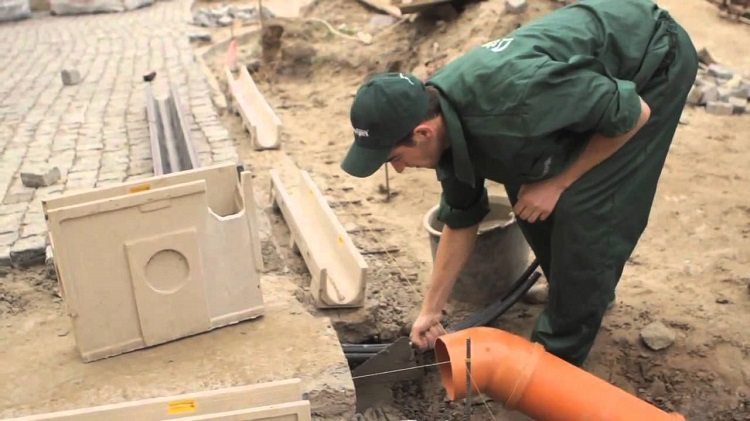
A sewer device in a private house requires compliance with the rules for laying pipes in the ground, the most important is their correct slope
A key indicator for the classification of sewer pipes is the material of manufacture. As mentioned above, today on the market there is not only metal products of rolled pipe, but also polymer products. The latter will be discussed a little lower, now let's talk about pipes made of materials traditional for this sphere.
According to this criterion, the following types of sewer pipes are:
- asbestos cement. They are distinguished by low weight, chemical and thermal stability, corrosion resistance and low cost. However, fragility makes it difficult to transport and install such external pipes for sewage. In addition, their inner surface is not perfectly smooth;
- concrete and reinforced concrete pipes for outdoor sewage. There are no complaints about the environmental friendliness of such products. However, for their transportation and installation due to the high weight, special equipment can not be dispensed with;
- cast iron pipes for sewage. Their time-tested positive properties are leveled by a large weight, which complicates installation work, as well as susceptibility to corrosion. The rough surface of the cast-iron pipes for plumbing water supply and sanitation causes frequent clogging of these utilities
- ceramic. In the recent past, sewage in an apartment was very often created on the basis of such products. Of their positive qualities, it is worth highlighting resistance to the effects of most aggressive chemical compounds, absolute waterproofness and smoothness of the inner surface. The disadvantages of ceramic sewer pipes for internal use include fragility and heavy weight. Another significant drawback is the high cost. The reason is a rather complicated manufacturing technology. It requires the use of kaolin, chamotte, natural clay, as well as the obligatory procedure for high-temperature annealing.
Helpful information! Modern metallurgy even produces special cast iron ribbed pipes. Although they have not found application in sewer networks and water supply systems, they are very popular in the installation of heating pipelines.
Plastic pipes
In order to find the answer to the question of which pipes are better for sewage, it is necessary to consider the properties of all types of pipe products. Only then will it be possible to make the right choice.
So, despite the growing popularity of plastic pipes for sewage, they cannot be used everywhere, so the design of such products must be modified. Modern industry keeps pace with the times. Responding to the needs of consumers, it produces several modifications of polymer products.
PVC pipes. The abbreviation PVC refers to polyvinyl chloride material. Such pipes are used for gravity drainage, that is, one in which the drains move due to the force of gravity and pipeline slope. These products are characterized by durability and resistance to ultraviolet. They found application mainly in internal sewage removal systems, since they poorly tolerate the effects of aggressive environments and changes in street temperature. However, with the right approach, polyvinyl chloride products can also be installed in external networks.
Classification PVC polymer pipes for sewage strength class is as follows:
- lungs. Class SN2. Used when the drainage system does not pass under the roads and lies at a shallow depth;
- medium. Class SN4. The scope of this class of plastic sewer pipes is pipelines under small roads;
- heavy pipes for sewage. Class SN8. They are laid under motorways and industrial facilities.
Pipes from unplasticized polyvinyl chloride (abbreviation NPVH). They are used in the drainage system of any type: internal and external, pressureless and pressure. The downside of the sewer pipe NPVH is poor temperature resistance and combustibility. This is due to the properties of the starting material.
Good to know! The use of sewer and non-pressure PVC-U sewage pipes is allowed for continuous filling with effluents, the temperature of which does not exceed + 60 ° C. At the same time, the PVC-U of the product is capable of moving sewage for a short time at a temperature of + 100 ° C.
Polypropylene pipes. These products are distinguished by a long - up to 100 (!) Years - service life and resistance to high temperatures. The combination of these characteristics allows them to be used not only as a pipe for sewage in a private house, but also in a hot water supply system.
Polypropylene Pipe Products has the following advantages:
- under the influence of high mechanical loads, PP products are deformed, but do not break;
- high diffusion resistance;
- environmental Safety;
- resistance to acids and alkalis;
- high heat resistance. Withstand temperatures up to 100˚C.
Polypropylene pipes under the sewer have such disadvantages as:
- low resistance to ultraviolet radiation;
- increased elasticity. It is recommended to use a product of this type only as a pipe for internal sewage. Due to its increased softness, it is easy to deform during operation.
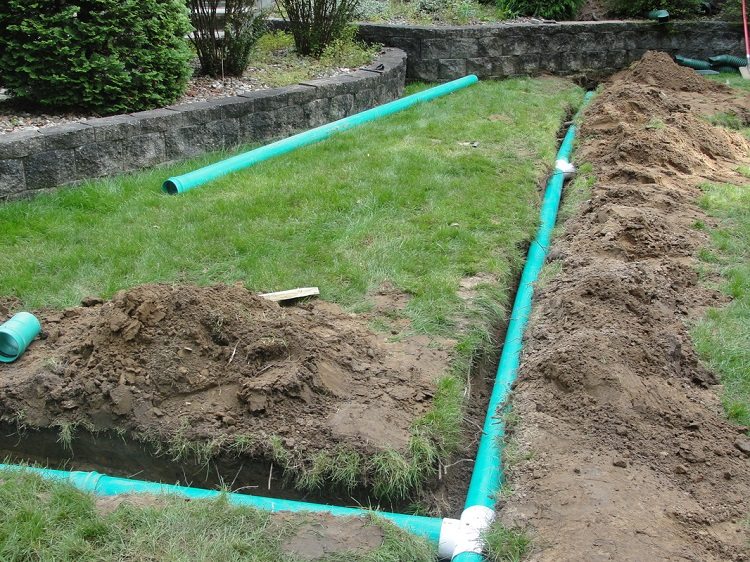
Pipes made of polypropylene are suitable only for a closed system, as they are adversely affected by ultraviolet
Polyethylene pipes for sewage. Products from this material are able to work in a wide range of temperatures. Among the minuses, insufficient heat resistance and a high coefficient of thermal linear expansion can be distinguished. Therefore, it is not recommended to use polyethylene pipes in the sewage system in which hot water is drained.
HDPE sewer pipes. The acronym PND refers to low-pressure polyethylene material. Of the main advantages of products of this type, experts distinguish:
- light weight;
- resistance to water hammer;
- possibility of operation at very low temperatures - up to -70˚С;
- lack of temperature elongation and expansion;
- low coefficient of thermal conductivity;
- lack of corrosion;
- long term of operation.
HDPE pipe for external sewage must be laid exclusively underground, since it does not tolerate the effects of ultraviolet radiation.
Corrugated pipes for sewage. Such products appeared relatively recently in this segment of the building materials market. According to experts, this is, in fact, an ideal option for an external sewer pipe. The consumer appreciates the following qualities corrugated plastic pipe in the system for the disposal of domestic wastewater;
- long (about half a century!) service life;
- ease of installation;
- flawless smoothness of the inner surface of corrugated flexible pipes for sewage;
- affordable price.
- ease of maintenance.
Pipes for pressure and pressureless sewers
When considering this issue, you need to know that pressure sewage is such a system in which wastewater moves through pipes under the pressure created by the pumps.
Such a technical solution presents certain requirements to the design of the pipeline. First of all, pressure sewer in a private house should be created on the basis of pipes with increased ring stiffness.
Good to know! The sewer created in the apartment with your own hands does not belong to the category of pressure head. Wastes are transported to the central highway by gravity, and already there the pumps are switched on.
Pressure sewer pipes should have the following properties:
- resistance to water hammer;
- universality;
- non-susceptibility to electrocorrosion caused by stray currents;
- strength;
- ease of installation;
- tightness.
And, of course, pipes under pressure sewer must be resistant to chemically aggressive environments. NPVC products have all of these properties. The tightness of the structure is ensured by the connection with the sockets: sealing gaskets are inserted into their grooves. Table No. 1 presents the maximum working pressures and sizes of sewer pipes for pressure-fed PVC-U.
Table 1
| Average outer diameter mm | SDR 13.6 | SDR 17.0 | SDR 21.0 | SDR 26.0 | SDR 33.0 | SDR 41.0 | |||||||||
| MPA 1.60 (MPA 2.00) | MPA 1.250 (MPA 1.60) | MPA 1.00 (MPA 1.250) | MOP 0.80 (MOP 1.0) | MOP 0.630 (MOP 0.80) | MOP 0.50 (NPVC 100), MOP 0.630 (NPVC 125) | ||||||||||
| Wall thickness | |||||||||||||||
| face value | off | nom | off | nom | off | nom | off | nom | off | nom | off | nom | off | ||
| 315 | +1 | 23,2 | +2,6 | 18,7 | +2,1 | 15 | +1,8 | 12,1 | +1,5 | 9,7 | +1,2 | 7,7 | +1 | ||
| 280 | +0,9 | 20,6 | +2,3 | 16,6 | +1,9 | 13,4 | +1,6 | 10,6 | +1,3 | 8,6 | +1,1 | 6,9 | +0,9 | ||
| 250 | +0,8 | 18,4 | +2,1 | 14,8 | +1,7 | 11,9 | +1,4 | 9,6 | +1,1 | 7,7 | +1, | 6,2 | +0,9 | ||
| 225 | +0,7 | 16,6 | 1,9 | 13,4 | +1,6 | 10,8 | +1,3 | 8,6 | +1,1 | 7 | +0,9 | 5,5 | +0,8 | ||
| 200 | +0,6 | 14,7 | 1,7 | 11,9 | +1,4 | 9,6 | +1,2 | 7,7 | +1 | 6,2 | +0,9 | 4,9 | +0,7 | ||
| 180 | +0,6 | 13,3 | 1,6 | 10,7 | +1,3 | 8,6 | +1,1 | 6,9 | +0,9 | 5,5 | +0,8 | 4,4 | +0,7 | ||
| 160 | +0,5 | 11,8 | 1,4 | 9,5 | +1,2 | 7,7 | +1 | 6,2 | +0,9 | 5 | +0,7 | 4 | +0,7 | ||
| 140 | +0,5 | 10,3 | 1,3 | 8,3 | +1,1 | 6,7 | +0,9 | 5,4 | +0.8 | 4,3 | +0,7 | 3,5 | +0,6 | ||
| 125 | +0,4 | 9,2 | 1,2 | 7,4 | +1 | 6 | +0,8 | 4,8 | +0,7 | 3,9 | +0,6 | 3,1 | +0,6 | ||
| 110 | +0,4 | 8,1 | 1,1 | 6,6 | +0,9 | 5,3 | +0,8 | 4,2 | +0,7 | 3,4 | +0,6 | 2,7 | +0,5 | ||
MOP is the maximum pressure of the working medium (MPa) at its temperature of 20 ° C. In parentheses are the dimensions of the NPVC of the sewer pressure head pipe 100, corresponding to the maximum working pressure.
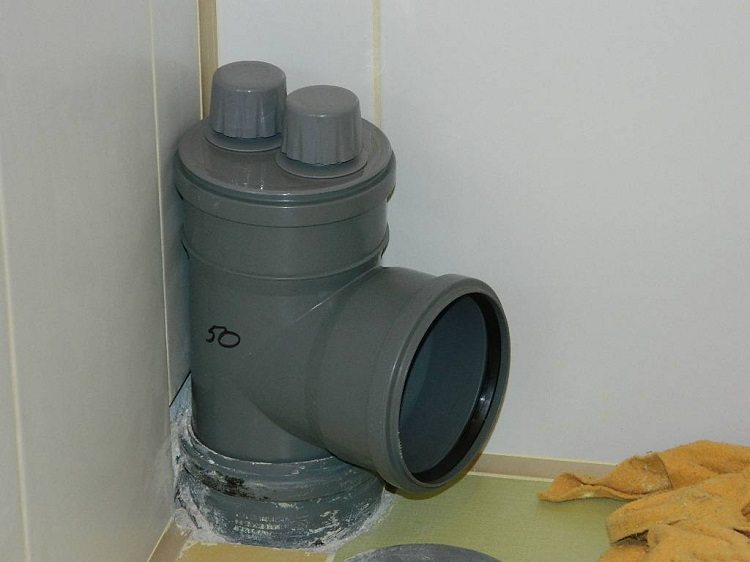
Sewerage of apartment buildings is considered pressure-free, but for it you still need to choose durable pipes, for example, PVC
There is a misconception that there are no special requirements for pipelines through which the working medium is transported without pressure. All of them should have the same properties that are characteristic of pressure types of pipes for sewage, except for increased ring stiffness. However, it will not hurt either. Consider some features of pressureless sewage, created on the basis of polyethylene pipes. Such products with a diameter of 125 to 4000 mm do not have worthy competitors in this field, even in the person of NPVH of sewer pipes.
First of all, it concerns the ease of installation. The arrangement of internal sewage systems with PE pipes does not require the use of special equipment. And the laying process itself facilitates a wide range of fittings manufactured by modern industry.
Perhaps the only drawback of this sewer pipe material is its exposure to direct sunlight. Therefore, store plastic products in a dark place.
Important! Despite its name - non-pressurized - the fluid in utility networks is transported under an average pressure of 5 bar or 4.93 atmospheres. So the drains are given a certain flow rate.
Of the features of operation, it is worth noting that the degree of filling of polyethylene sewer pipes for internal sewage should not exceed 0.8. This indicator is the result of dividing the height of the transported effluents by the diameter of the engineering communications. There are different situations in life. But polyethylene pipes under the sewer, being 100% filled at the time of peak load, will continue to do their job. And trouble-free!
Pipe color: what is he talking about
Arriving at a hardware store, on the shelves you can see several types of sewer pipes, different in color, but made of the same material. Thus, manufacturers have made life easier for consumers by giving products colors that are appropriate for each application. Thus, in order to purchase, for example, pipes for domestic sewage, it is enough to pay attention to the gray products. There are other colors. Briefly consider what they mean to the consumer.
The orange pipe. Such a product is used as a pipe for external sewage. Its walls are highly rigid and withstand high pressure, including external pressure. Orange pipes are good for laying sewer in the ground, and do not worry that in a few years you will have to change them.
Green pipe. Drain pipes are painted in this color. They can be flexible and rigid. Their surface is perforated, so that water penetrates into the product. The strength of the walls allows you to withstand a considerable layer of soil. In addition, a green drainage flexible sewer pipe has a high degree of resistance to temperature extremes.
Gray pipe. As mentioned above, the choice of sewer sulfur pipes is the best solution for arranging the inside of the drainage system of a country cottage or cottage. It is easy to work with, it is not afraid of corrosion and is very durable. Due to the low resistance to mechanical stress, the gray pipe is unsuitable for organizing an external pipeline.
White pipe. In terms of frequency of use, it cannot be compared even with a black sewer pipe. This type of product is preferred by people who do not want to spoil the aesthetics of their homes.
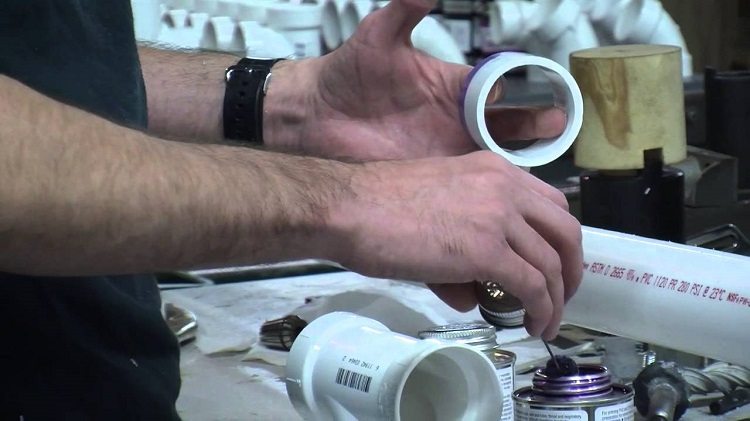
White pipes are used for indoor sewage systems, these are one of the few types of products that can be glued
Black pipe. Such products can be found much less often than orange and gray plumbing pipes. They are made of low pressure polyethylene.The scope of the sewer black pipes is the laying of both internal and external pipelines. However, it must be taken into account that there is a certain range of pressure and temperatures that they can withstand.
Independently these products are used extremely rarely. They were most widely used as protection for communication cables. Some modifications of black pipes can be used as drainage. They can be distinguished by the presence of many holes on the surface.
Good to know! Gray color can discord with the interior of the kitchen or bathroom. Therefore, a white pipe is an excellent alternative to a gray pipe.
Dimensions of polymer sewer and drainage pipes. GOST
PVC pipes. The sizes of polyvinyl chloride products are indicated in the state standard R 51613-2000 (geometric characteristics of pressure pipelines of the sewage system) and in construction standards BCH 48-96 (dimensions of elements of pressure-free networks). The product range contained in the last document contains only 3 sizes of diameters: 110.90 and 50 mm. The first two values of this parameter are classified as “sewer classics”. Pipes (including NPVH) with this diameter are used for vertical riser in the apartment.
Cross sections of pressure pipes (13 sizes in total) vary in the range of 63 ... 315 mm. In this case, the basis of the riser of industrial sewer systems are usually products of 250 and 300 mm.
PE pipes. According to GOST 22689.2-89, there are only 4 sizes of these products. These are diameters of 40, 50, 90 or 110 mm.
PPR pipes. The range of polypropylene products is specified in two standards: GOST R 51613-2000 and GOST 22689.2-89. But besides them there are more overall pipes of the external sewerage. These include the well-known brands Korsis and Pragma. Their cross section reaches 1.2 meters. Of course, organizing a riser of this diameter is impractical. And in general, these pipes are not suitable for internal sewage. OST 4926-002-88742502-00 requires the use of polypropylene products with a section of 150, 100 or 50 mm for this purpose.
Flexible drainage pipes. The most popular polymer products from HDPE and PVC. Modern industry produces corrugated single-layer drainage pipes of the following sizes:
- length 40, 50 meters;
- diameter 63, 90, 110, 160 and 200 mm.
The standard hole cross section is 5-15 mm. The interval between them is 50 ... 70 cm.
The upper shell of two-layer flexible corrugated drainage pipes has good characteristics of resistance to external mechanical influences. And the inner surface has excellent slip performance. Such flexible polymer pipes are produced by extrusion.
Central sewer riser
Do-it-yourself sewerage in a private house, as a rule, is created on the basis of one riser. However, if the system wiring large, there may be several. But, one way or another, the withdrawal of effluents should be through the lowest point.
Good to know! In order for the sewage system to work properly, it must be connected through two points: the highest (there is a fan riser for the release of gases) and the lowest (here the sewage pipe is supposed to exit the house to the common main).
Incorrect arrangement of the lowest point of the outlet of the sewer pipe from the house will cause blockages in the system that interfere with the normal discharge of sewage. With absence fan boner unpleasant odors will not be removed, and the formation of gases (methane and ammonia) will create pressure in the instrument valves. This also applies to the sewage system in a multi-storey apartment, and not just a private house.
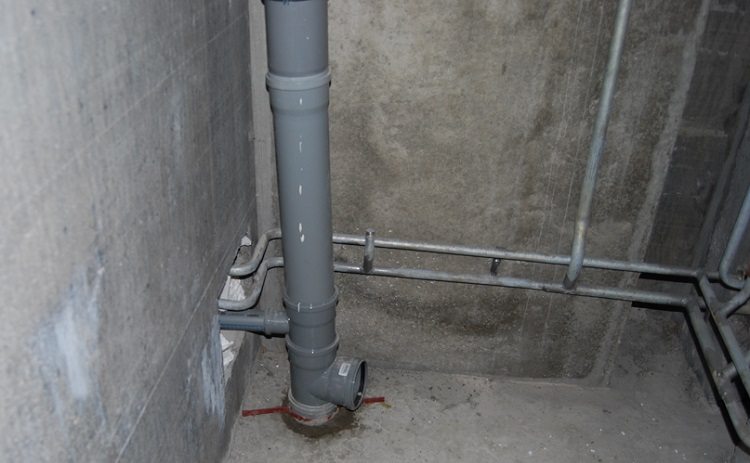
All sewers in the apartment are reduced to the central riser, which must be equipped according to all the rules
According to SNiP, the combination of a conventional ventilation riser with a riser and especially with a fan is strictly prohibited. It is also forbidden to arrange the joint withdrawal of risers into one ventilation shaft. Regulatory documents contain another important requirement. It sounds like this: it is necessary to install the riser according to a previously developed and approved project. In addition, all drains should be reduced to a single outlet point of the sewer pipe from the base of the house.
Sewer shutter
This type of plumbing is designed to prevent flooding of the premises with sewage. An accident can occur not only because of clogging of the internal, but also of the street sewer pipe, the exit of which from the building is almost always carried out underground. Rising to its level, drains will flood the basements and basements.
There are two methods to prevent this negative phenomenon.
- common. It consists in installing a hydraulic shutter in the sewer at the outlet of the exhaust pipe.
- local. This method provides for the protection of specific plumbing located below the outlet well.
Shutters come in several forms.
Mechanical. They are produced for pipe diameters of 100 ... 200 mm. The following types of mechanical shutter are available:
- single chamber;
- single chamber, with manual locking of the shutter;
- two-chamber, in which the control of the shutter of one camera is carried out manually;
- single chamber shutter designed for vertical installation;
- valve designed for overflow well.
The single-chamber device is designed to work with conditionally clean drains. The two-chamber sewer lock can be used for sewage with fecal masses. Both types of such plumbing are installed, as a rule, in the basement before the exit of the inner pipe to the external highway. Another location for the shutter may be the external pit of the structure.
Electric shutter. Such a device works in automatic mode. The electrically operated shutter does not create obstacles for the discharge of drains, since the normal state of the damper is the open position. When the pipeline is 70% full or a reverse sewage current is detected at its output, a signal is transmitted from the sensor located on the valve body to the electronic unit. Having received it, “smart electronics” turns on the light and color alarms and closes the valve, moreover, not only to the input, but also to the output.
Important! Thus, during an accident, the discharge of effluents from the structure will also not be carried out. That is, until it is eliminated, the bathroom cannot be used.
Picking up plastic sewer pipes, immediately it is necessary to pay attention to the insulating material. However, modern technologies come to the rescue in this matter. Insulate the sewage pipeline today it is possible with special materials, as well as with power cable. With proper installation, it works more efficiently than traditional and latest heaters. However, due to significant monetary costs, insulation with an electric cable did not displace the use of thermal insulation materials.
